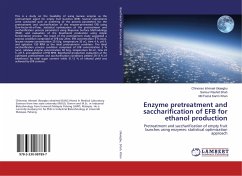Lignocellulosic materials are plant materials such as agricultural residues forest products (hard and soft wood) and crops (switch grass, Salix). The materials are not only cheap but are also readily available all year with little or no interference with food production chain. However, strict policies need to be developed for the management agricultural produce. This will reduce competition between biofuels (biodiesel, bioethanol and biogas), chemicals and food (Kumar, Barrett, Delwiche and Stroeve, 2009; Guo, Fang, Xu and Smith, 2012). Over the years, biomass derived fuels has been inadequately investigated due to factors that affect pretreatments and hydrolysis of biomass industrially. Pretreatment of lignocellulosic biomass play major process in the production of bioethanol. It involves the breakdown of the rigid structure of lignocellulose for the release of lignin, hemicelluloses and cellulosic polymers within the biomass.
Bitte wählen Sie Ihr Anliegen aus.
Rechnungen
Retourenschein anfordern
Bestellstatus
Storno








